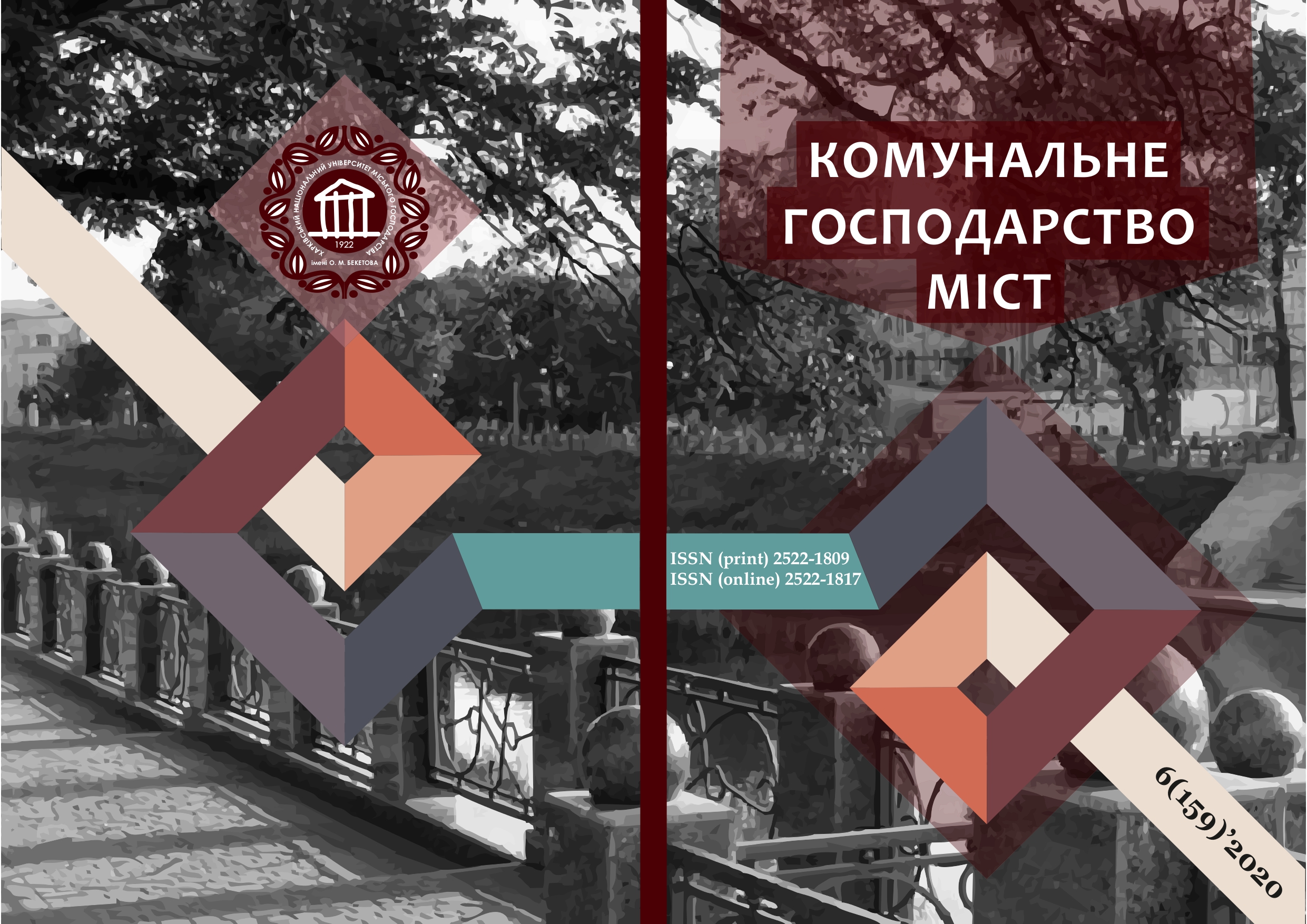PROCEDURE, RULES FOR OBTAINING AND PROCESSING DOCUMENTS IN CONSTRUCTION
Array
Keywords:
design documentation, urban planning activities, construction and technical expertise, construction objectAbstract
The resolution of many disputable situations that occur during the construction and operation of buildings and structures is carried out in court by the appointment of a forensic construction and technical expertise. As result of the activity of forensic examination, there is a need to study the design and estimate documentation, determine the types, scope, quality and cost of construction and repair work performed; establishing compliance of their characteristics with the requirements of special codes and rules governing the processes of design, construction, operation, reconstruction during repair, dismantling and disposal of buildings and structures.
The objects of research of construction and technical examination are: buildings, structures, engineering and other equipment and documentation to it, in particular, technical passports, inventory; working projects and working documentation; specifications, explanatory notes to the project; conclusions of the state complex examination; local estimates; general information on resources; agreements or contracts; additional agreements; acts of performed contract works; certificates on performed contract works; reports on regulatory write-off of materials; acts of inspection of hidden works; calendar plans or network schedules; work logs; commissioning acts.
Carrying out construction and technical expertise in this way there is own characteristics and requires constant improvement of methodology. The expert builder must have a thorough knowledge of the regulatory framework for such work and the procedure for maintaining appropriate documentation to determine the type of construction and repair work.
The paper considers the main points of implementation of documents before construction, registration of documentation during construction and documents during the commissioning of the construction object, as well as which regulations provide requirements for their execution.
References
2. On approval of the List of construction projects for the design of which urban planning conditions and restrictions are not provided: order of the Ministry of Regional Development, Construction and Housing and Communal Services of Ukraine No. 289 dated 06.11.2017 Verkhovna Rada of Ukraine: website. URL: https://zakon.rada.gov.ua/laws/show/z1437-17#Text (date of the beast 5.10.2020).
3. Procedure for development of project documentation for construction of facilities: order of the Ministry of Regional Development, Construction and Housing № 45 dated 16.05.2011. Verkhovna Rada of Ukraine: website. URL: https://zakon.rada.gov.ua/laws/show/z0651-11#Text (date of the beast 8.10.2020).
4. SBC А.3.1-5:2016. Organization of construction production: Ministry of Regional Development, Construction and Housing of Ukraine. Kyiv, 2016
5. SBC V.1.3-2:2010. Geodetic works in construction. Ministry of Regional Development, Construction and Housing of Ukraine. Kyiv, 2010.
6. SSU B. D.1.1-1:2013. Rules for determining the cost of construction: Ministry of Regional Development, Construction and Housing of Ukraine. Kyiv, 2013.
7. On architectural activity: the law of Ukraine № 1407-IV dated 03.02.2004 (edition dated 16.10.2020). The Verkhovna Rada of Ukraine: website. URL : https://zakon.rada.gov.ua/laws/show/687-14#Text (date of the beast 15.10.2020).
8. SBC А.2.2-3-2014. Composition and content of design documentation for construction: Ministry of Regional Development, Construction and Housing of Ukraine. Kyiv, 2014.
9. SBC А.2.2-3-2014. Composition and content of design documentation for construction. Change №1: Ministry of Regional Development, Construction and Housing of Ukraine. Kyiv, 2018.
10. Abyzov V. Architecture-&-Building Systems. Notion and Evolution. IOP Materials Science and Engineering. 2019. Vol. 471, Iss. 9 : World Multidisciplinary Civil Engineering-Architecture-Urban Planning Symposium (WMCAUS – 2018), 18–22 June 2018, Prague, Czech Republic. URL : https://iopscience.iop.org/article/10.1088/1757-899X/471/9/092006/pdf (date of the beast 15.10.2020).
11. Adrianov V.P., Galinsky O.M. New procedure for inspection of commissioned construction sites and problems of its application. Industrial construction and engineering structures. 2017. № 3. pp. 8–13.
12. Dosumu Oluwaseun Sunday, Afolarin Adenuga Olumide. Causes Effects and Remedies of Errors in Nigerian Construction Documents Organisation. Technology Management in Construction : an International Journal. 2013. Vol. 5, Iss. 1. P. 676–686.
13. Cheng Wang, Hamaz Abdul-Rahman, Faizul Ali Mohd-Rahim, Nursuhuhada Zainon, Wei Wei Cheon. Improve Documentation Quality for Engineering: Leap Forward Through Project Learning, Journal of Frontiers In Construction Engineering, 2013. Vol. 2, Iss. 4. P. 83–88.
14. Downing Ronal E., Avalon Andrew P.E., Foster Curtis W. The Impact of Contemporaneous Project Records on Claims Preparation and Expert Analyse. Littleton, Colorado : Long International, 2016. 20 p.
15. Mohamad Ibrahim Mohamad, Zulkifli Madon. Understanding Contact Documentation. Proceedings of the 6th Asia-Pacific Structural Engineering and Construction Conference (APSEC 2006), 5–6 September 2006, Kuala Lumpur, Malaysia 6th APSEC. URL : http://eprints.utm.my/id/eprint/515/ (date of the beast 15.10.2020).
16. Gangane Aditya S., Mahatme Parag S., Sabihuddin Syed. Impact of Construction Documents and Records on Sustainable Project Management An Overview International Journal of Engineering Research & Technology (IJERT). 2017. Vol. 6, Iss. 3. P. 120–124.
17. Kishan Patel, Bhatt Rajiv, Bhavsar J.J. A Study of Risk Factors Affecting Building Construction Projects. International Journal of Engineering Research & Technology (IJERT). 2014. Vol. 3, Iss. 12. P. 831–835.
Downloads
Published
How to Cite
Issue
Section
License
The authors who publish in this collection agree with the following terms:
• The authors reserve the right to authorship of their work and give the magazine the right to first publish this work under the terms of license CC BY-NC-ND 4.0 (with the Designation of Authorship - Non-Commercial - Without Derivatives 4.0 International), which allows others to freely distribute the published work with a mandatory reference to the authors of the original work and the first publication of the work in this magazine.
• Authors have the right to make independent extra-exclusive work agreements in the form in which they were published by this magazine (for example, posting work in an electronic repository of an institution or publishing as part of a monograph), provided that the link to the first publication of the work in this journal is maintained. .
• Journal policy allows and encourages the publication of manuscripts on the Internet (for example, in institutions' repositories or on personal websites), both before the publication of this manuscript and during its editorial work, as it contributes to the emergence of productive scientific discussion and positively affects the efficiency and dynamics of the citation of the published work (see The Effect of Open Access).

